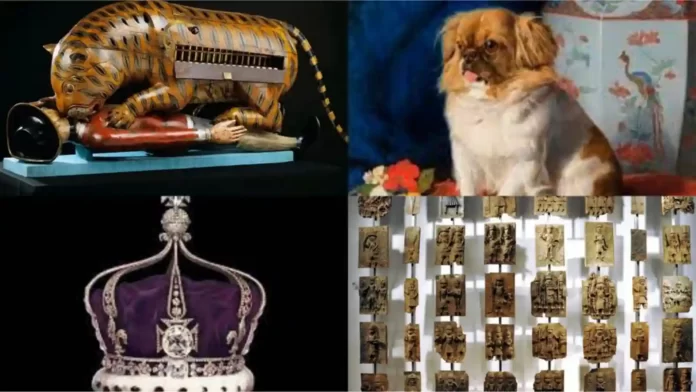
Conquering many countries around the globe from the late 16th century to the 20th century, the British started dominating, exploring, and ruling, and alongside they also developed their business well. In the name of doing business, the British entered the countries and eventually started dominating and ruling them.
They even took the precious artifacts from another country to their own motherland and started labeling them as their own as they were taking them during their ruling period. Continue reading to know more about the 10 most precious artifacts British Empire took from other countries.
1. Benin Bronzes
The Benin Kingdom is now known as Nigeria. In 1897, the British sent its soldiers to punish the Benin rebels who fought against British Power of rule.
During this fight, the British took down the kingdom to an end and also grabbed all of their artifacts including the Benin Bronzes, and kept them safe at the British Museum.
2. Parthenon Marbles
The ruling period of the Ottoman Empire, which lasted for 400 years, started in 1453.
Lord Elgin, ambassador of the British Empire, took them from Parthenon in Greece between 18091 – 1805 and now it is safely kept at the British Museum.
3. Rosetta Stone
Deciphering the Rosetta Stone, which is kept at the British Museum and it helped the researchers to understand the culture of Ancient Greek.
The stone was initially captured by Napoleon Bonaparte and later by the British after their victory against the French in 1815.
4. Koh-i-Noor
It is one of the largest cut diamonds in the world which was taken from India around the period of 1849 by the British during their ruling period.
Koh-i-Noor or mountain of light was originally found in the Mughal Peacock throne and traveled to different hands and finally to Queen Victoria’s crown and is presently kept at Tower of London’s Jewel House.
5. Tipu’s Tiger
Originally it was created for Tipu Sultan who rules Mysore, India during the 18th century, as the tiger was his symbol. Tipu Tiger is a life-sized wooden figure which creates the noise of dying moans via an organ present inside the tiger when the soldier’s hands are turned.
The British East India Company took it after their victory against Tipu Sultan. It is now kept on display at Victoria and Albert Museum.
Also Read: “I’m Lucky To Have Her In My Life”: Tom Holland Opens Up About Her Relationship With Zendaya
6. Maori heads
Maori heads were beheaded, bare, and tattooed, which is presently kept for display at various European museums like the British Museum.
It is an important artifact of Maori culture, in 1770, the British took it out of interest in tattoo patterns and traded them.
7. Saartjie “Sarah” Baartman
At the age of sixteen, Baartman lost her husband in killings and was sold as a slave to a trader. Due to the signed contract between Baartman and the British in 1810, she was subject to Scientific experiments and racialized eroticism.
After her death in 1815, the remains of her body were displayed in a museum in Paris for decades.
Around 2002, President Nelson Mandela arranged to return the Baartman’s remains to South Africa for a respected burial.
8. Maqdala Manuscripts
These are religious scripts that were used to own by Ethiopians before they lost the war of Maqdala to the British.
Around 1868, the British carried these manuscripts via elephants and mules and kept it safe at the British Library.
9. Looty, a Pekingese puppy
Looty was a Pekingese puppy, which was captured by the British from China’s Imperial Summer Palace.
During the Second Opium War in October 1860, the British along with the French forces explored the palace and found the dog.
Later, the puppy was given to Queen Victoria for her Royal Collection of Dogs and named Looty, the aftermath. The dog died in 1872 at Windsor Castle.
10. Seeds of Hevea Brasiliensis
Rubber was a major demand during the period of 1876 to 1912 as it was needed for the production of tires, wires, and more.
In 1876, the British explorer, Henry Wickham illegally took and hide around 70,000 seeds of Hevea brasiliensis, AKA Pará rubber tree, from the rainforests of Brazil.
Later, the British Empire captured him and restored some of the seeds, and upheld its own rubber plantation in its colonies. It led to the end of Brazil’s domination in rubber production.
These 10 most precious artifacts that British Empire took from other countries were not ranked based on anything as it is all generally numbered.
Read More: Which Character Is John Cena Playing In ‘Barbie’ Movie Featuring Margot Robbie?



